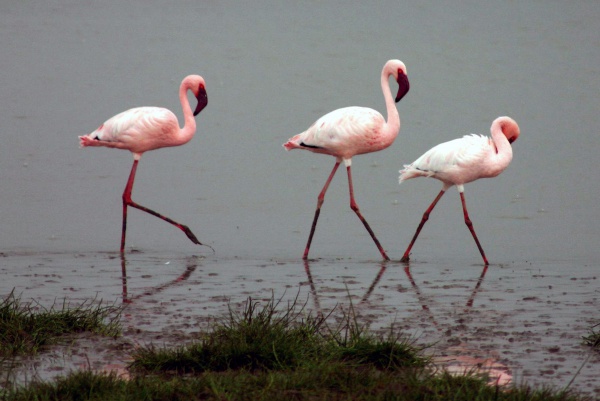Facts About Lesser flamingo
The lesser flamingo is a captivating bird found primarily in sub-Saharan Africa and India, although they occasionally wander further north. Recognized as the smallest flamingo species, these birds weigh between 1.2 to 2.7 kg and stand approximately 80 to 90 cm tall. Their pinkish-white feathers and striking black bills make them easily identifiable.
These flamingos derive their pink hue from their diet, which is rich in Spirulina algae found in alkaline lakes. However, life poses many challenges for them. They face threats from predators such as marabou storks, baboons, and African fish eagles.
In terms of breeding, Lake Natron in Tanzania is a key site, although they also breed in other parts of Africa and Asia. They lay a single egg on a mud mound, and the chicks are raised in large groups, or crèches, led by adult birds to the water.
Despite their large numbers, lesser flamingos are listed as near threatened. Their populations are declining due to threats to their breeding sites from pollution and human development.
Conservation efforts are crucial. Initiatives like the Agreement on the Conservation of African-Eurasian Migratory Waterbirds aim to help protect these remarkable birds. It is imperative to focus on safeguarding their habitats and addressing issues such as heavy metal poisoning and industrial activities that threaten their breeding areas.
